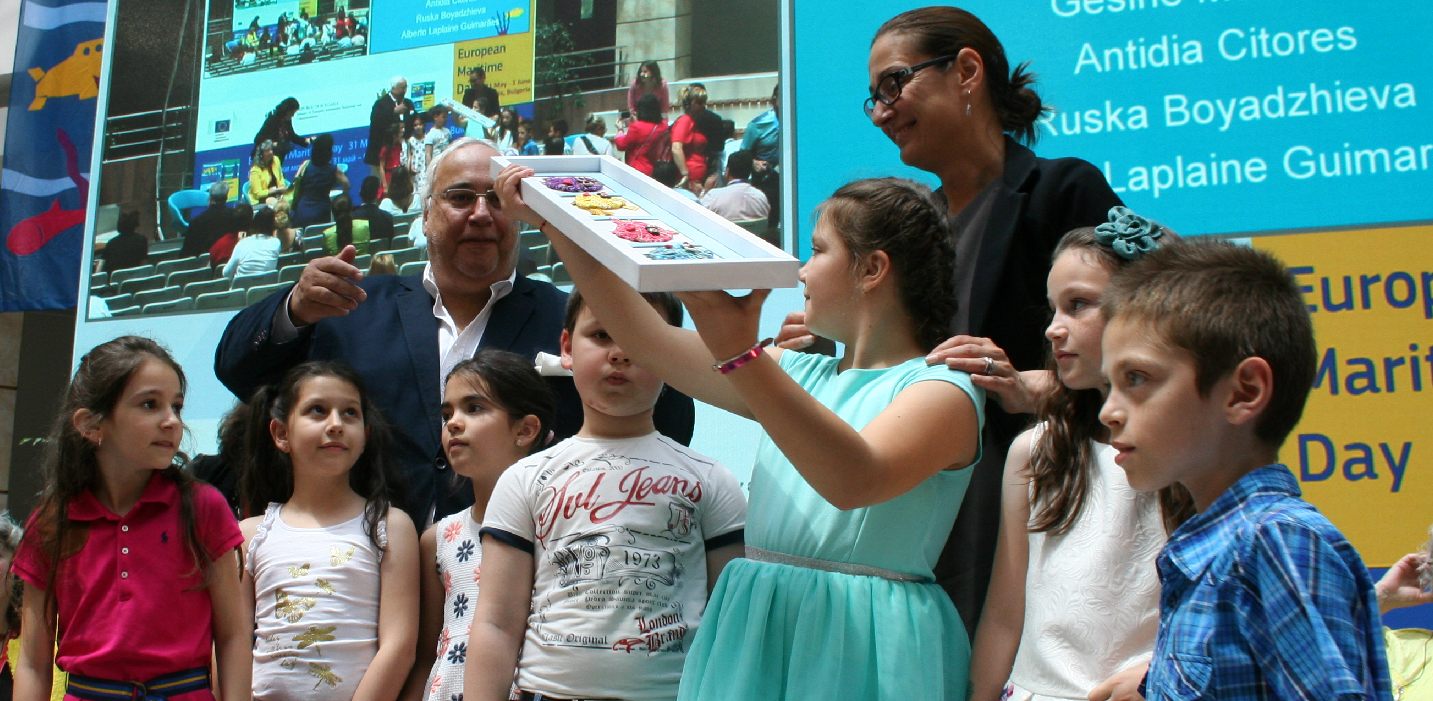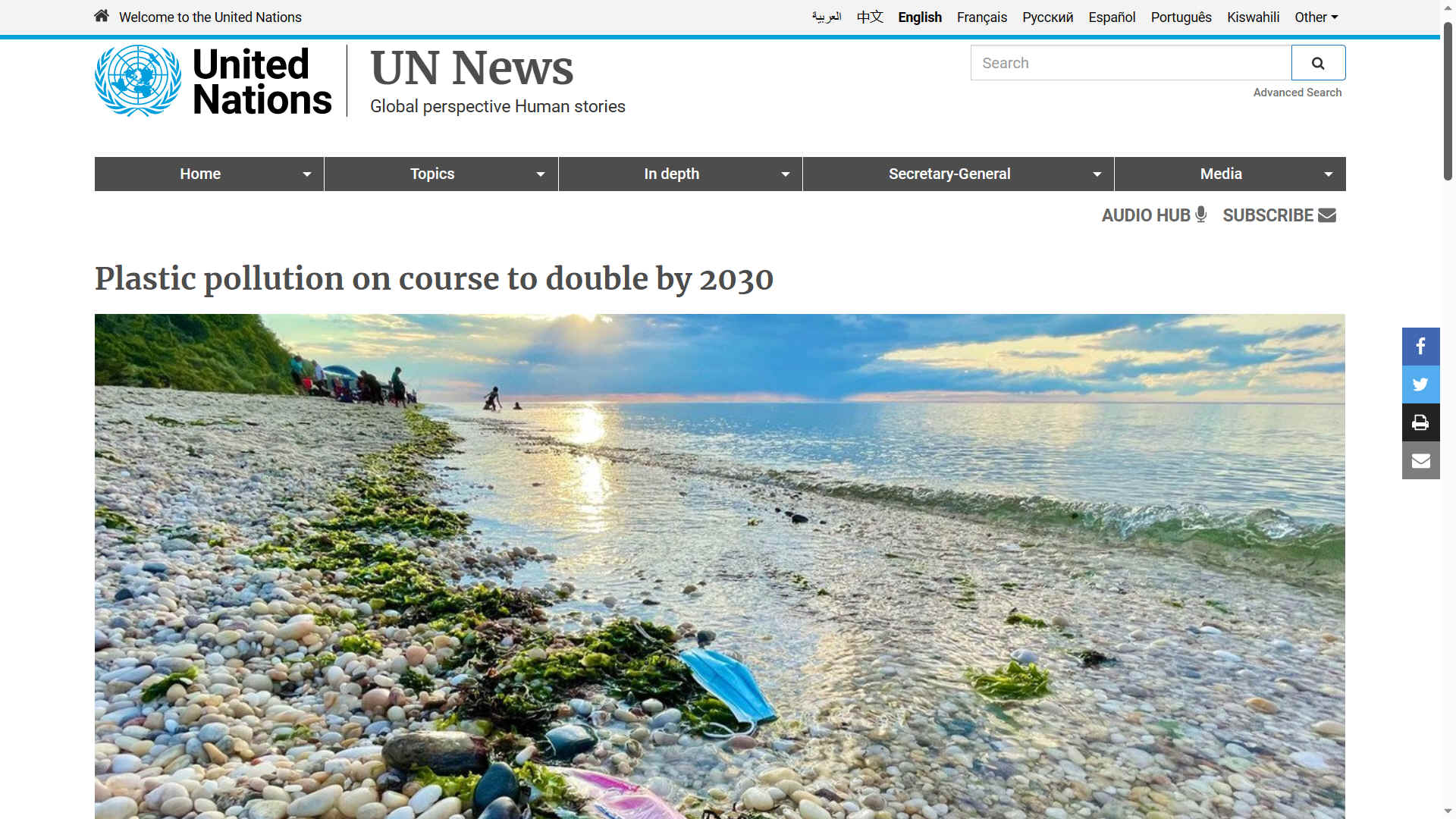|
W
H A T I S O R A N G E G R O W T H ?
PLEASE
USE OUR A-Z INDEX
TO NAVIGATE THIS SITE OR SEE OUR HOMEPAGE

HANDOVER
CEREMONY -
Alberto Laplaine Guimarães is presented
with a gift of maritime art from the children of Burgas and
Ruska Boyadzhieva. Alberto is the Secretary General of Lisbon
City Council and Ruska the Deputy Mayor of Burgas, Bulgaria.
Bulgaria reinforced their commitment to blue growth in a
ministerial statement to conclude this superb event for which
the City of Burgas should be rightly proud. Copyright ©
photograph June 1 2018 Cleaner
Ocean Foundation.
Blue
Growth is part of our agenda when it comes to zero
pollution shipping, now largely supplemented with creative ocean
activism and awareness campaigns, such as Kulo-Luna
and the JVH2.
Firmly placing the activities of the Cleaner Ocean Foundation
in the realm of Orange
Growth. And that includes, probably, the
world's fastest hydrogen ship, the Elizabeth Swann.
The orange economy refers to the creative economy, or the production of goods and services that are based on intellectual property, technology, and cultural inspiration. Some examples of the orange economy are arts, media, design, software, and
tourism. The color orange symbolizes creativity and innovation.

UNEP
REPORT OCTOBER 2021 - Plastic pollution in our oceans is set
to double by 2030, with recycling not enough (we told you so)
and global cooperation needed (we told you so again). Don't
let the politician spin doctors protract enacting a solution
any longer. If shoppers were to boycott plastic wrapped
products, apart from the fact they may starve, supermarket
suppliers would be forced to switch to paper, glass and metal
packaging - or face bankruptcy. The fact politicians allow
them to continue as they are tells us that it is the policy
makers who are to blame. And, they like it as it is, lots of
money for them, backhanders (dividends) or not, taxes as
income from plastic products is akin to procurement fraud -
for any government involved.
|
COLOUR |
ECONOMIC
DESCRIPTION |
|
- |
- |
|
SILVER |
LEISURE
& WELL-BEING, NUTRITION, SPORTS, FINANCE,
TRANSPORT & HOUSING |
|
GOLD |
RENEWABLES
(SUNSHINE) ENERGY TO REPLACE FOSSIL FUELS, REPAIR THE
PLANET |
|
ORANGE |
CREATIVE,
INTELLECTUAL PROPERTY, ARTS, MEDIA, CULTURAL &
TECHNICAL |
|
GREEN |
ENVIRONMENTALLY
FRIENDLY, REDUCING POLLUTION, SUSTAINABLE AGRICULTURE
|
|
BLUE |
SUSTAINABLE
OCEAN GROWTH, BLUE ECONOMY, FISHING & PLASTIC
REDUCTION |
|
RED |
MASS
PRODUCTION & CONSUMPTION, UNSUSTAINABLE OVER
BORROWING, EXPLOITATION |
|
PURPLE |
HEALTHCARE
(WHITE) AGING POPULATIONS, SOCIAL, EDUCATION, QUALITY
OF LIFE |
|
BROWN |
FOSSIL
FUEL & NUCLEAR, TRADITIONAL INDUSTRIALIZATION, ENVIRONMENTAL
DEGRADATION |
|
GRAY |
UNDERGROUND
EXPLOITATION OF WORKERS RIGHTS, TAX EVASION, GOVERNMENT CORRUPTION |
|
BLACK |
ILLEGAL
BLACK MARKET & CRIMINAL ECONOMIC ACTIVITIES, TRAFFICKING, DRUGS |
WHAT
IS ORANGE GROWTH ?
The 2021 UN Year of Creative Economy
put the ‘orange economy’ front and centre at a time when we need creative solutions for the world’s challenges.
The final two months of 2019 marked a major milestone for the global creative community as the UN moved to ratify a resolution to make 2021 the International Year of Creative Economy for Sustainable Development.
This was a hard-won landmark for the creative industries. It recognizes and elevates the creative economy as an important tool for building a sustainable, inclusive, and equitable future.
When the resolution was being negotiated and approved, no one could anticipate what the intervening year would hold: a status quo-shattering pandemic. But perhaps what has felt like the end of the world is the beginning of a new world.
What could be more fitting when entering a new era than a dedicated focus on creativity and the role it can play in helping us achieve the 2030 Agenda for
Sustainable Development?
More than ever, we need creative thinking, innovation and problem solving to imagine ourselves out of the furrow we've been in. The creative industries, the lifeblood of the creative economy, are well placed to help.
The creative economy, a long evolving concept, builds on the interplay between human creativity and ideas and intellectual property, knowledge and technology. Essentially, it is the knowledge-based economic activities on which the ‘creative industries’ are based.
The creative industries, an important source of both commercial and cultural value, include advertising, architecture, arts and crafts, design, fashion, film, video, photography, music, performing arts, publishing, research & development, software, computer games, electronic publishing, and TV/radio.
With the formal announcement of the 2021 United Nations Year of Creative Economy for Sustainable Development, the creative economy was finally recognised as a powerful force for good, livelihoods, social cohesion and economic development through the trade in creative goods and services.
The announcement also acknowledges the role of creative industries in supporting entrepreneurship, stimulating innovation and empowering people, including young people and women, while preserving and promoting cultural heritage and diversity.
The moment was a culmination of a decade of momentum behind the creative economy. Since 2008, multiple reports from United Nations agencies such as UNESCO, UNDP and
UNCTAD have set the scene for an understanding of the creative economy and provided tools to help us ‘count’ culture and creativity.
This meant that in 2015, creativity and culture were on the agenda for the crafting of the Sustainable Development Goals (SDGs), leading to their inclusion primarily in SDG 8, but also SDGs 9, 11, 12, and 17.
This is part of an ongoing story in which greater emphasis has been put on the role of creativity and culture as turnkey economic sectors, with the bonus of other positive impacts.
The performance of the creative economy in the past two decades are indicative of both its impact and its potential. 2015 estimates by
UNESCO and professional consulting firm EY put the contribution of the creative industries to global GDP at 3%.
UNCTAD, which has been tracking the trade in creative goods and services for close to 20 years, found that creative economy export trade growth averaged 7% between 2002 and 2015, often outpacing the growth rate for other industries. In 2015, UNCTAD pegged the value of the global market for creative goods at a significant US$509 billion.
A CHANCE TO RE-IMAGINE THE CREATIVE
ECONOMY
But the situation is not all roses and not everyone benefits from the creative economy equally. Developing countries face many challenges exporting their creative economy outputs, and we need to do more to protect intellectual property and improve data analysis for the industry. 2021 gives us the chance to spotlight both the creative economy’s value and its challenges.
Before COVID-19 hit, the global creative economy was growing fast in certain regions. This momentum should not be lost in the wake of the pandemic; rather, greater investment needs to flow to the creative industries that have the potential to make localised and high impact, and help us shift to more sustainable practice.
With a decade to go to reach the SDGs, now is the moment to clearly map out and demonstrate how culture and creativity fit into the 2030 Agenda for Sustainable Development Agenda. We also need to come together to innovate on how to fund the creative and cultural targets within the SDGs.
Impact investing can and will play a critical role in this journey. Investment is the key to unlocking the true potential of the creative industries, and the returns from the creative economy are both promising and multi-dimensional – addressing social, cultural, innovation and economic needs.
ENEMY
OF ORANGE GROWTH
At
the moment the enemies of orange growth are criminals that
violate copyright laws, and plagiarism, the high cost of
enforcing legal rights, and clawing back damages from those
who infringe. The other problem concerns the absurdly
high cost of patent protection for budding innovative engineers,
who enter a market where their work may easily be stolen by
big business.
Councils
in particular are frightened and do not understand creative
people. They often target them as non-conformists. So
hindering and even destroying the talent in their midst.
WHY
ORANGE
GROWTH?
The Orange economy, or the creative economy, was given this name in 2011. The term was coined by British writer John Howkins. It refers to everything that is developed through people’s creativity and inspiration that becomes a good or service. It covers everything from a toy to a play, including the most scientific aspects of
R+D.
The color orange has been historically tied to youth and happiness. Many consider it to be the color that is the most fun, often associated with culture and creativity. Furthermore, the name orange comes from the fruit and a good way to eat an orange is to squeeze its juice. Something similar occurs with the creative economy – an orange we can squeeze as many times as needed using intellect.
WHAT DOES THAT MEAN NOW?
According to the book “La economía naranja. Oportunidad infinita” (The Orange Economy: Infinite Opportunities), written by economic expert in this field, Felipe Buitrago, if the creative economy were a product: it would have the fifth greatest volume of business in the world. If it were a country, it would be the fourth economic power with a GDP of $4.3 billion, 2.5 times the planet’s military expenditure, and a total of 144 million workers.
There’s also its dramatic growth. According to the United Nations Conference on Trade and Development (UNCTAD) exports of creative goods and services rose 134% from 2002 and 2011.
Technological advances and development have brought the orange economy to a boiling point.
ICTs have made great strides in changing the way we communicate, work and even relate to each other, as we can now be connected 24 hours a day. On the other hand, the Internet is a window to the unknown world. Clicking or pressing a tactile screen on our smartphone or tablet lets us see, learn or explore any issue that interests us.
Technological advances are generating new spaces for artists or creative people to develop and innovate: mobile internet, the Internet of Things, cloud technology, energy storage, 3D printing and new materials.
That’s why Felipe Buitrago talks about the “third Industrial Revolution or digital revolution”, and therefore, the “orange revolution” in his book.
The MGI (McKinsey Global Institute) estimates that this exponential growth will have an economic impact of $8.8 trillion to $24.9 trillion over the next 12 years for the technologies listed above.
With data and figures like these, it’s easy to see that the Orange Economy is now a fruit that can produce a lot of juice.
#HORIZON
EU MISSIONS 2030

PLEASE
USE OUR A-Z INDEX
TO NAVIGATE THIS SITE OR SEE OUR HOMEPAGE
Copyright © Cleaner
Oceans Foundation Ltd (COFL) (Company No: 4674774)
January 2024.
Solar
Studios, BN271RF, United Kingdom.
COFL
is a charity without share capital.
|


